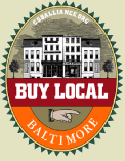Green Your Supply Chain: 7 Questions and 7 Tips

7 Questions to Ask When Considering Purchasing a Product or Material for Your Business:
1. Apply life-cycle thinking. This includes:
a. Does the product contain toxic materials?
b. Where do the raw materials come from and where is the product manufactured?
c. How much energy is used to extract and ship components or parts of a product?
d. How much energy, water and resources are used to create and package the product?
e. How can it be disposed of or recycled at the end of its useful life?
f. Are there any environmental or health impacts of its use?
2. Do you even need to purchase the product new? Sometimes a used item is just as good.
3. Exactly how much of it do you need? Don’t buy more than you need; this wastes money and resources.
4. What type of packaging does it come with? Environmentally-conscious companies are doing all sorts of creative things to green their packaging. This addresses the materials that packaging is made from, as well as the amount of it.
5. Is the product well-designed for its intended purpose? Often, cheaply made goods fall apart and are thrown away within 3 months of purchase.
6. Does the use of this product require special ventilation? If so, don’t buy it! There are plenty of alternatives for low- and no-VOC cleaning products, paints, and adhesives.
7. Depending on how far you want to take it, ask about labor practices. Does the manufacturer pay a living wage, do they give their employees benefits, do they have a diverse workforce? Do they contribute to their community? The social aspects of sustainability / green are sometimes overlooked, but have huge potential payoffs.
7 Tips:
1. Look for locally-produced and sourced products. This helps support your local economy, and reduces transportation-related environmental costs.
2. Look for materials that are any or all of these: non-toxic, biodegradable, renewable, recycled, recyclable, durable, reusable.
3. Look for equipment that is, at minimum, Energy Star rated (a program of the EPA). Buying energy efficient equipment is one of the best ways to green your supply chain, because it saves you money.
4. Even if something costs more in the first place, analyze whether its operating or in-service cost is lower than a cheaper alternative. This is often the case, because more durable, reliable equipment generally costs a little more.
5. For whatever you buy, there is probably a guide to finding environmentally preferable products. For example, The EPA and Stop Waste both have reliable information.
6. Green Seal is a reputable organization that certifies certain products, such as office products, cleaning products, construction materials, and food service products.
7. When considering something like recycled paper that may cost more, look at the big picture. Do you print on both sides of the paper? Setting your printers to do this can save a tremendous amount of paper and money.
Source for a few of the points:
"The Truth About Green Business ," by Gil Friend (Questions: #1 (pg 86), #2 (p 123); Tips: #3 (pg. 124))





 View the dynamic, moving GOforChange: Greening Baltimore video
View the dynamic, moving GOforChange: Greening Baltimore video
